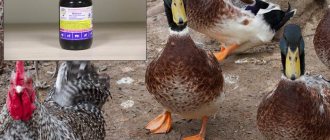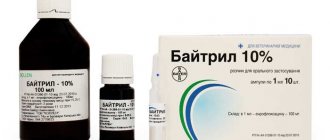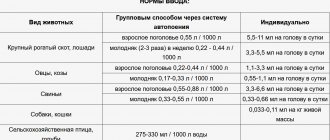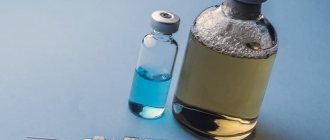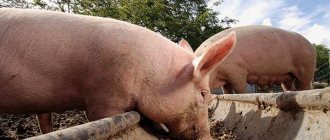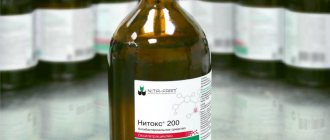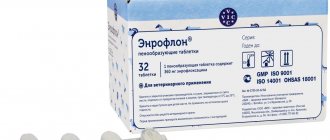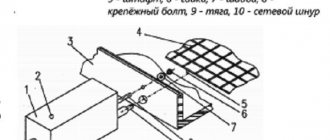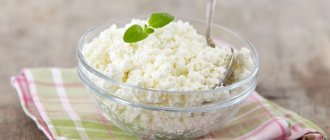The diet of young laying hens should be complete and balanced. To do this, owners add various vitamins and microelements to their food.
One of the most important additives is fish oil - a source of development and growth of young birds.
This supplement has a number of positive properties. When used correctly and regularly, it:
- will increase immunity to various diseases;
- will positively affect the processes of growth and development;
- will relieve chickens from gastrointestinal disorders, anemia and allergies;
- will increase the quality and quantity of eggs in laying hens;
- will form a strong musculoskeletal system of broilers;
- improves the functioning of the hematopoietic system.
And these are not all the indicators that speak about the benefits of the additive; it can also be noticed in the taste of the product - the meat becomes more tender, nutritious, and the yolks of eggs acquire an orange tint.
Let's take a closer look at how to properly give fish oil to laying hens, what contraindications and side effects there may be.
Types of feed additives for chickens
Also check out these articles
- Black currant Exotic - description of the variety
- Imperial Fritillary Flower
- Raspberry Hercules
- Plum variety Morning
Feed additives may differ not only in purpose (for young animals, chickens, laying hens, broilers), but also in composition. Below are various types of premixes.
- Vitamin supplements for laying hens are purchased when birds lack vitamins. As a rule, the main problem is a lack of vitamin D. It is necessary for the health of poultry bones and shell formation. Birds can also pick up vitamin A, which affects vision, yolk, vitamin E is responsible for fertilizing the egg. Vitamin supplements are labeled this way; they are not difficult to distinguish; the amounts and types of vitamins are indicated on the label. Also, vitamin premixes may contain amino acids, which are necessary for their normal absorption.
- Mineral supplements for laying hens enrich the diet with minerals. In this case, you can buy individual products or mixtures. Chalk contains sulfur, iron, magnesium, and calcium. Salt includes sodium, potassium. The shell contains a lot of calcium. But these are simple mineral supplements that are always given to chickens. There are also special purchased mineral premixes, which contain many different minerals.
Important! Most often, laying hens lack iron and vitamin D. So, when buying a premix for them, you should make sure that these elements will be in it at least in small quantities
- Protein supplements for laying hens are protein concentrate. They supply the birds’ bodies with amino acids necessary for life. As you know, there is protein in grains and not much in boiled vegetables. If chickens are not regularly given various worms, bugs, and wheat germ, then such a premix may be required. Protein premixes are called that, but a lot of protein is also contained in feed additives such as bone, meat and bone meal or fish meal.
- Medicinal premixes include not only nutrients, but also medications. They are most often given to prevent various diseases for chickens and young animals. Adult laying hens are given medicinal supplements if they are already sick.
Important! Medicinal premixes often include antibiotics, which can spoil the taste of eggs and poultry meat. In addition, after feeding them, you should not eat the eggs that the bird gives you for the next 4-7 days. Therefore, they are given to adult birds only in case of illness!
Therefore, they are given to adult birds only in case of illness!
“Zdravur laying hen” is a more expensive feed mixture, but of high quality, it contains 11 vitamins, 7 microelements, amino acids and even enzymes!
Complex premixes are among the most popular. They are given when there are no serious problems, simply for prevention, so that the laying hens have enough nutrients in the feed. Complex premixes may contain about 7-11 vitamins, minerals of various types, amino acids, and feed fats. Enzymes are also sometimes added to them to improve digestion.
Feed additives for egg production and poultry health can be purchased at any veterinary or agricultural store or on the Internet. They are sold in different packages for small and large farms. But you shouldn’t buy a large pack right away. Experts recommend first testing a small portion of the premix on birds, and then purchasing a large batch of the additive, since sometimes birds react poorly to certain components in the composition.
Release form and description
The veterinary industry produces this product in 100 ml dark brown glass bottles, half-liter dark plastic bottles or gelatin capsules. Externally, the drug looks like a thick, yellow, oily substance with a not very pleasant fishy aroma.
Important! Fat extracted from the liver of sea fish does not contain any artificial impurities, only natural substances, minerals and vitamins.
The product is extracted from the liver and entrails of fish that live in the sea.
Feeds: their varieties
During the period of chicken breeding, knowledge of proper feeding of birds is necessary so that in the future they produce a lot of eggs, giving a good profit from this. A responsible approach to diet planning can increase the chance of getting high-quality and large eggs.
In their farms, poultry farmers need to use three types of feed for laying hens:
- Dry. This is a compound feed produced and sold exclusively in crushed form. This way the bird will not overeat, so it will be possible to protect the animal from obesity. It is enough to give 120-130 g per day to one laying hen feeding on mixed feed.
- Wet. This is a homemade mash, which contains the following ingredients: cake, flour, cereal, boiled potatoes, herbal flour, other vegetables, wheat bran, meal. The basis of the mash is water and dairy products. It is not recommended to prepare mash in large quantities; such food quickly turns sour. For caged laying hens, it is necessary to add chopped herbs to the dish. If the birds are in an aviary, then they are given grass separately - this will allow the birds to choose what they like.
- Combined. To prepare such food, you can use various foods, including dry mixtures and mash. It is advisable to add grain and mineral impurities to the mash. A healthy combined feed should consist of 1/3 protein impurities and 2/3 grain.
Where to buy?
You can buy fish supplements at any pharmacy or veterinary store. It is worth realizing that this is a rather expensive purchase if you have a large number of individuals in the coop. Some farmers have learned to make fish products themselves. To do this, they buy fish of any kind and melt the fat from it.
To do this, you need to put all the insides in a container and put them in the microwave for fifteen minutes. The resulting liquid is poured into a container and stored in the refrigerator. Anything left over can be fed to the birds or added to mash.
Nutritional features of adult chickens
To provide birds with all the necessary nutrients, their feed must contain a number of substances:
| Substance | Norm in %, day |
| Squirrels | 15 — 18 |
| Carbohydrates | 60 — 70 |
| Fats | up to 5 |
| Cellulose | 4 – 6 |
The norm per day is calculated taking into account that during the day one adult eats 120 - 130 g of food.
To prepare the mash, various types of grains and cereals are used. Animal waste and vegetables are added to them, such as:
- Rutabaga (fodder beet);
- Potato;
- Carrot.
All products are crushed and boiled. The porridge should be of medium consistency. In winter, it is placed warm in feeders. Daily feeding of chickens may include mash or mixed feed. Birds should not be given heavy food at night. It is best to pour grain into the feeders.
Next to the feeder, there must be a drinking bowl with water with small pebbles and sand. Due to the structural features of the chickens’ digestive system, pebbles can improve their digestion.
Combined food can be purchased in the store, or you can make it yourself at home. To do this, you need to take grains, legumes, animal products, cake, etc. Alternatively, you can use the following composition:
- 70% wheat;
- 10% each of barley, oats;
- 5% each of meat, fish waste, chalk, lime and plant seeds containing large amounts of oils (sunflower, pumpkin).
Before serving, this mixture is crushed and moistened. It can be given together with mash and green grass.
Feed for laying hens
To ensure a high level of egg production, it is necessary that the following types of feeding be present in the diet of laying hens and hens of egg-laying breeds:
| Useful substance | Where present |
| Protein | Fish, meat waste; Legumes; Insects; Cake. |
| Fats | Sunflower seeds; Oats; Pumpkin; Corn. |
| Carbohydrates | Vegetables; Corn; Bran. |
| Calcium | Shells; Gravel; Limestone; Bone flour; Chalk; Gypsum; Eggshell. |
The lifespan of a chicken is 3 – 5 years. Laying hens lay the most eggs in their first year of life. They need to be provided with enhanced nutrition, including:
- Boiled potatoes;
- Carrot;
- Bone meal;
- Barley;
- Yeast;
- Pumpkin;
- Millet;
- Green grass.
Depending on the time of year
During active egg production, chickens need to be fed 3-4 times a day. This period usually falls in the summer season, so in the summer it is necessary that the food consist of at least 50% protein.
An example of a diet in the summer:
If the birds can freely go outside and are able to find some food on their own, feeding at lunchtime can be skipped. Animals in cages need to be fed more often, just like in winter. In order for birds to lay eggs well in winter, 50% of their diet should be carbohydrates, and the following must be added to the diet as vitamins:
- Boiled vegetables;
- Hay;
- Dairy products;
- Silage;
- Forgiven grains;
- Cake.
During molting
Birds' feeding during shedding of feathers should not be as intense as during laying eggs. Moulting chickens should be given more protein foods of animal origin, but despite this, the diet should be varied. The following products are needed:
When to Give Fish Oil to Chickens
This information will be useful to those who want to know the feed requirements for chickens 2-3 weeks old. This age of chickens indicates that their body is already ready to digest almost any green food.
We suggest you read: How to prepare cauliflower for the first feedings of a baby
You can gradually add yeast to the feed appropriate for the age of the bird, and also diversify it with fish products. The yeast solution is prepared in the proportion of 3 g of dry yeast per 4 ml of water for 1 bird.
Feeding with wet mash is better for this age when it is prepared using meat broth. Remember that when feeding broiler chickens at home, you should especially carefully monitor the freshness of perishable products (such as cottage cheese, fish, yeast).
This rule must be followed to avoid gastrointestinal problems in young birds. The rapid growth of chickens depends on how healthy the bird is during the entire feeding period.
And of course, raising broilers at home will not be possible without preventing various poultry diseases. A three-week-old brood can begin to be fed with Baybox.
One chicken requires a lot of vitamins, however, the dosage (amount of the drug) must be strictly observed. To raise a healthy bird, it is also necessary to regularly add vitamin B to its drink. Taking minerals should precede each feeding.
Many novice poultry farmers often make a very common mistake. They are trying to feed broilers on wet mash alone. However, broiler chickens at 3 weeks of age also require some fish oil, vegetables and grains. Their growth and development depends on this.
At 2–3 weeks, the chicks are completely ready to be fed boiled potatoes, mashed with porridge and carrots. You can also add a little bread pulp there.
The 3-week brood diet is a green period for broilers. Birds can consume it in any form before slaughter. Nettle, dandelion leaves, and alfalfa are popular. They stimulate good growth in birds. Don't forget about dairy products too. Finish feed also plays an important role in feeding chickens.
Fish oil will only be beneficial if given in the right amount and at the right time.
How much fish oil should you give a chicken per day? Starting from the fifth day of a chicken’s life, she is given vitamin supplements. All this must be strictly controlled to avoid overdose. The older the chicken, the more fat is added to it.
Experienced farmers know how to produce entire vitamin complexes. In general, the scheme for distributing fish oil is quite simple: one week the birds are given fatty supplements, the second they take a break. And so it constantly alternates.
A course of consuming a fish product will allow your birds to maintain increased body defense properties throughout the year.
In case of overdose, chickens may experience loose stools and other digestive system disorders.
The drug should be stored in a place protected from sunlight. After all, under the influence of the sun, vitamin A breaks down, and vitamin D turns into a toxin. You should not experiment on the health of young chickens.
Fish oil is not beneficial in any quantity. You need to be able to give it correctly. The dosage of vitamins added to broiler feed is strictly regulated. A balanced diet is clearly dosed. As the chickens grow, the dose of fish oil added to the feed increases. The correct dosage of fish oil in poultry nutrition ensures maximum performance in the development of egg production and weight gain.
How to give chickens shells
Hello, I read the forum but didn’t find an answer. How to give shells to chickens? I poured them into a separate container, but they don’t eat them. Can it be given together with mixed feed? If so, in what quantity per head?
Good time. There is no need to give it. You just need to put it in a separate container. The chickens themselves will peck as much as they need.
Good afternoon BanShi. Have you tried giving river shells? It’s free and, most importantly, the chickens eat it with pleasure. There is a river not far from me and the bank is full of empty “waste” shells. You burn them on coals (for example, in a stove in an old frying pan), and then what remains is very easily pounded.
exactly. I also have a free shell. the river is nearby. about three years ago I collected it to feed broilers and chickens in baths. there was a mountain of shells left. I’ve been feeding for three years already, another 5 years will be enough. I hit it with a hammer a couple of times a week - and the chickens are happy, and I haven’t spent a penny.
I mix the shell into the mash. Such feeding has more effect. I also mix in chalk along with the shell. When fed this way, the shell is always strong and the chickens never peck the eggs.
In what proportions do you give shell rock? I have it freely available, but this method of “feeding” is not very effective for them, I want to try giving it along with the mash.
with a mash shell it is economical to give and more useful. I have 50 chickens and I give 2 tbsp every day. spoons. but along with the shell I also add chalk and a preparation for egg production. When the chickens are all laying eggs, I make this mash 3 times a week. This is enough for the chickens to lay eggs well.
GalinaNikolaevna So I think it’s more economical to mix it up. Thanks, I'll have to try it
I have 50 chickens and I give 2 tbsp every day. spoons.
2 tbsp. spoons of already crushed shell? 2 spoons for how much food?
Feel free to add it to the mash.. + separate container.. it won’t get any worse
GalinaNikolaevna wrote it correctly. I will add from myself. Definitely in the mix. If there are a lot of chickens, then a separate trough may not be found. And if you want exact numbers, then for 1 chicken per day you need 6 grams of shell + 7 grams of chalk, the shell will be perfect. Of course, you can find monocalcium, but it is not available everywhere.
Do you need to boil them or grind the shells raw until they are big enough for the chicken to swallow?
Our shell hangs separately. No one has missed yet, whoever needs to come up and peck.
what is this shell? that I have never seen this before
An ordinary river shell, crushed!
You need to give a shell, you can also feed chalk. add the shell to the mash, but mostly in a separate feeder next to the coarse sand!
dalal repairs poured out the trash chalk I don't give it. was the winner at Easter
I have a lot of access to seashells (mussel shells and the like). In principle, it crumbles not bad if you wrap it in a rag or hammer it in a basin, but this is a long process, I want it to go faster, and so that there are no large pieces left. I plan to put the production of feed shells on stream, so at the initial stage I want to make do on my own and at the same time master relatively large volumes. At least kg. 30-60 per day to start with.
Dosage
The manufacturers of this drug recommend giving 2-4 ml per day per head to adult birds, 0.2-0.5 ml to chickens, starting from the fifth day of life. It is important to remember that the drug is stored in a dark place, as due to Under the influence of sunlight, vitamin D is destroyed and converted into toxiceriol, which is poisonous. Vitamin A is completely destroyed by the sun.
The drug is used at intervals, fish oil is used for a week, a break is taken for a week. The most favorable period for administering the drug is the beginning of spring (March) and mid-autumn (October), so fish oil is given once every six months at intervals. Those periods are specially selected when the bird needs nutrients the most, but receives them from the feed in small quantities. When raising and keeping chickens in cages, fish oil is administered year-round with breaks.
The required amount of the drug is mixed with water (1:2) and mixed with the food so that the fish oil is evenly distributed throughout the mash. Side effects when taking the drug are generally not observed if the dosage is in accordance with the standards. If stomach upsets occur, the dosage is reduced; if there is sensitivity to the composition of the drug, an allergy may occur.
It is important to follow the correct dosage of the drug. If the dose is increased, birds may develop intestinal diseases.
You should start adding fish oil portions around the fifth day of a chicken's life. For adults, the minimum dose is not changed for one week. The poultry farmer must be sure that the birds are not allergic to the drug and that it does not cause any side complications.
The scheme for adding fish oil to the daily menu of birds is quite simple:
- The initial test dosage for any individual, regardless of age, is 0.2 milliliters. You should not immediately exceed the dose, as this may lead to the fish oil not being absorbed.
- The dose must be calculated for each resident of the chicken coop separately. 0.2 milliliters is the daily dose, which is the norm and is given throughout the week.
- Over time, the amount of fish oil given should be increased. Adults need 0.5 milliliters per day.
- Broilers require a double portion of vitamins, as they need special nutrition for rapid growth.
- After the course of taking the fish product comes to an end, you should take a break, which can last from two weeks to one and a half months.
A week before slaughtering the chicken, you must completely stop adding fish oil to your food. This is explained by the fact that fish oil affects the quality of meat - it begins to smell like fish products and changes color slightly.
In order to make the consistency of the drug more liquid, it can be diluted with warm, clean water. The proportion is as follows - one part vitamins to two parts water.
The drug that you diluted should be added to the mash and thoroughly distributed throughout it. Experienced farmers say that it is necessary to add half a teaspoon of fish oil per kilogram of porridge. Dry food is given to birds at the moment when the supply of fat stops, that is, during the break.
Now you know about the role of fish oil in the life of chickens and in what dosages and when it should be given. Do not forget that the main task of a farmer is to create favorable conditions for the life of poultry.
Only after you take care of a high-quality poultry house and develop the correct daily nutrition menu for chickens, will they produce the highest quality and most numerous quantities of products. With the help of vitamins, you can maximize immunity and protect your livestock from various diseases.
Tags: broiler, give, fish, chicken
About the author: admin4ik
« Previous entry
What does feeding include?
Some breeders and farmers limit the diet of laying hens to only grain crops or exclusively combined feeds. However, this approach will not allow the full potential of productivity to be used and, in the event of a deficiency of nutritional components, will lead to disease. Therefore, it is recommended to use a feeding regime in which laying hens will receive grain products in the morning and evening, and mash in the afternoon. Feed consumption rates are described in this article.
Stern
- Dry. Includes grain mixtures (barley, wheat, oats, corn), legumes, dry feed, hay and straw. Such products should be present in the diet as sources of vitamins, carbohydrates and proteins.
- Juicy. Such products are also required to be served for poultry. In summer, the group consists of seasonal vegetables and fruits, herbs, and tops. For the winter, it is recommended to harvest melons for long-term storage and fodder root crops.
- Concentrates. They are dry mixtures containing the required amount of proteins, carbohydrates and fats. They require mandatory supplementation with succulent feed.
- Animal feed. This category includes fish and meat and bone meal, dairy products, meat by-products, broths, insects and worms.
Compound feed
Combined feed for laying hens
Compound feed can be given dry in granules, as well as soaked or brewed. Based on them, it is also useful to prepare mash with the addition of broths and fermented milk products.
Premixes and additives
Adding commercial premixes to food is a great way to enrich inexpensive feed and increase the productivity of laying hens. Vitamin and mineral supplements help maintain egg production even in winter
However, it is important to choose specialized premixes for this. Among the most balanced and popular:
- Ryabushka;
- Laying hen;
- Zdravur laying hen;
- Anti-stress for laying hens;
- Felucene.
The vitamin supplement helps increase the laying capacity of chickens.
Dosages are indicated on product packaging. As a rule, it is recommended to add the powder directly to the feed. It is possible to separately purchase such a product for chickens.
Vitamins
The lack of vitamins in the diet of laying hens can be determined by the following signs:
- sudden decrease in egg production (vitamin D, A and B);
- anxiety and fearfulness (vitamin E);
- slower development and growth in young chickens (A, D);
- bleeding and hematomas (K, B vitamins);
- frequent colds (B and E);
- loss of feathers and down (E and B12);
- change in yolk color (A);
- thinning of the shell, fragility (D).
All the necessary vitamins are contained in green grass (especially chickweed and dandelion), carrots, cabbage, and unrefined grains. The premixes listed above can also fill the deficit. Separately, it is possible to use the preparations Vitvod and Vittri for subcutaneous administration and feeding of poultry.
Making fish oil at home
The supplement is widely available on sale, it is available in any veterinary store or pharmacy, but for those farmers who have a large number of birds, the purchase will be expensive, so some have learned to prepare the supplement at home. To do this, take any fish, from the inside of which this substance is obtained by heating. The internal organs, placed in a container, are placed in the microwave for 10 minutes. The resulting substance is poured into a bottle and stored in the refrigerator.
Fish oil is prepared for chickens by melting the tripe in an aqueous solution over low heat. The substance that floats to the surface is removed with a spoon.
Fish oil for laying hens
Chicken feed {amp}amp; How to properly give medications and vitamins to birds
2. Fish oil for animals. After thawing from frost.
We invite you to read: What do phosphate fertilizers provide?
If a farmer has a large number of chickens, then using such a valuable drug will not be cheap. And many resort to making their own fish oil. For this purpose, any fish with entrails is bought, then the fat is rendered from the internal organs. To do this, put everything that was inside the fish in a plate and put it in the microwave for 10 minutes, the fat is rendered out, and it is poured into a jar and stored in the refrigerator.
How to choose a feed additive
Feed additives for laying hens are selected based on several factors.
Bird breed. As a rule, laying hens are given vitamin and mineral supplements, but if the chickens are meat-and-egg-producing, you can buy them a combined premix. As for broilers, they need to add protein to their feed. The age of the bird also matters. Premixes for chickens, young animals, and adult birds come under different categories, and differ greatly in composition and price. The final goal. Depending on the problem, one or another food is selected. If, for example, eggs have a thin shell, then mineral supplements are needed; if the bird has become sick, there is a lack of vitamin D or the yolk has become discolored, then vitamin premixes are taken.
“Salvavit” is a vitamin and mineral complex with an abundance of iron, zinc, copper, vitamins A, E, D, B, K, H
Content type. Caged birds need protein and vitamins. It is better to take complex drugs and introduce them into the diet from an early age. If the chickens are kept on range, then you can take some specific premixes or complex ones, but give them only in autumn and winter, when there is a lack of nutrients.
When choosing a premix for chickens, you should pay attention to the quality of the product. Dyes, strange preservatives, incomprehensible names in the composition, which even the seller has not heard of, indicate low quality. It is advisable to take those premixes whose composition is as natural and simple as possible.
It is advisable to take those premixes whose composition is as natural and simple as possible.
Shelf life and storage conditions
The product should be stored in a cool place, for example, on the side shelf of the refrigerator, away from ultraviolet radiation. Failure to follow these recommendations will lead to the fact that this product, which is initially not very pleasant in taste and aroma, acquires a rancid taste and smell if stored incorrectly.
Important! Sun rays destroy vitamin A in the product. The sun not only has a destructive effect on vitamin D, but also contributes to its transformation into poison (toxysterol).
Adding fish oil to poultry feed will help the poultry farmer increase the profitability of production, as it will reduce the mortality of chickens, increase the egg production of laying hens and reduce the time it takes for broilers to gain body weight.
Mineral supplements in the diet
Mineral supplements are divided into macroelements and microelements. Macroelements include sodium, chlorine, sulfur, potassium, calcium, phosphorus and magnesium.
Important! When feeding chickens at home, it is very important to add sodium, calcium, phosphorus and chlorine to the diet. It is extremely rare for broilers to develop iodine and manganese deficiency. Table salt is the main source of chlorine and sodium
And while birds can still get sodium from another source, chlorine cannot. The main symptoms of substance deficiency are:
Table salt is the main source of chlorine and sodium. And while birds can still get sodium from another source, chlorine cannot. The main symptoms of substance deficiency are:
- Slow growth;
- The bird begins to lay eggs worse;
- Egg shells become more fragile;
- In rare cases, seizures occur;
- The general condition of the bird is lethargic.
You need to add salt in the amount of 2 g per head per day.
Important! You can't give more than normal. This can lead to poisoning or even death. Under no circumstances should you feed feed intended for other animals, such as pigs, precisely because of the different amounts of salt content
Under no circumstances should you feed feed intended for other animals, such as pigs, precisely because of the different amounts of salt content.
Mineral supplements for chickens
Adding crushed shells to food
Shell rock is necessary to restore potassium levels. One shell contains approximately 40% potassium, which is 60% of the daily value. Domestic chickens are in great need of potassium due to the fact that they constantly lay eggs, losing it. The most striking symptom of potassium deficiency is a thin egg shell or its complete absence.
Birds should be given about 6-8% of crushed shells mixed with the main food per day.
Small chickens can be given this supplement on the third day of life in an amount of 1-1.5%. The shell is also useful because it restores the level of iodine and magnesium, which is especially important for broilers
Limestone
Contains potassium, magnesium, phosphorus, sulfur and iron. Add to the diet in the amount of 10 g per chicken.
Limestone stern
Feed chalk
Chalk for laying hens is as important an element as the shell. This is explained by the calcium content, which helps increase egg growth. How to give chalk to chickens? The chalk solution is not given in its pure form; it is mixed into chicken feed at a rate per adult up to 5% of the total mass.
Calcium is very important for birds in the first month of life. All that remains is to understand how much chalk to give to laying hens and broilers. The supplement should be used from the first week of life in the amount of 30 g per day. For older chicks, over seventeen weeks, the amount should be increased to 50 g.
Feed chalk
Eggshell
One of the most famous and affordable supplements. Contains 80% potassium. Give it at the rate of 10 g per individual, after crushing it.
Wood ash
This type of supplement contains the following minerals: 33% potassium; 2% phosphorus; 9% sodium and 7% each of potassium, magnesium and phosphorus. Add to general feed in the amount of 10 g per head per day.
Fish and meat bone meal
Added to increase protein levels in birds.
Important! It is worth adding very carefully, since fishmeal contains a large amount of salt, and meatmeal contains potassium. The calculation of other additives will need to be changed
Sapropel
Sapropel (lake silt) is rich in protein and calcium. If desired, you can add it to the main feed in a ratio of 20 g per chicken.
Fish fat
Contains vitamin A, D, Omega 3-6-9. This is a necessary supplement for birds, which improves immunity, promotes growth and weight gain, and prevents the development of worms in chickens.
Important! If chickens are raised in cages, fish oil is essential to support the immune system. Fish oil must be mixed with water in a ratio of 1 to 2; it can also be mixed with ready-made feed. How much fish oil should you give chickens? For chickens the dosage is 0.2 ml
For adult broiler chickens - up to 5 ml. For laying hens, preferably no more than 0.5 ml
How much fish oil should you give chickens? For chickens, the dosage is 0.2 ml. For adult broiler chickens - up to 5 ml. For laying hens, preferably no more than 0.5 ml
Fish oil must be mixed with water in a ratio of 1 to 2; it can also be mixed with ready-made feed. How much fish oil should you give chickens? For chickens, the dosage is 0.2 ml. For adult broiler chickens - up to 5 ml. For laying hens, preferably no more than 0.5 ml.
Fish oil for laying hens
For an adult bird
Fish oil helps laying hens and broilers absorb calcium, resulting in increased egg production and improved egg quality. It also has a beneficial effect on the formation of a strong bone system in broilers.
Fish oil for chickens is administered in a dosage of 2 to 5 ml per individual, mixed into the feed. Adding fish oil for broilers and layers to the mash is done by mixing it with warm water in a 1:2 ratio. The resulting mixture is added to the feed, mixing thoroughly. This fortified course allows laying hens and broilers to increase resistance to disease for the whole year.
We suggest you familiarize yourself with: Getting to know the most popular types and varieties of periwinkle (description and photo)
Broilers that need rapid weight gain need to be given a double portion. After completing the course, they take a break of 2 weeks, and in some cases, 1.5 months. At this time, laying hens begin to be given dry food.
If the bird is being prepared for slaughter, then fish oil for chickens is stopped a week before. This is due to the fact that it affects the smell and color of meat.
Fish oil is mixed into chicken feed
Benefits and characteristics
This medicine is one of the necessary vitamin supplements to strengthen the body of young birds. The supplement contains a large number of vitamin elements: A, E, D, omega-3, omega-6, iodine, sulfur, phosphorus. Chickens need fish oil. The benefits of this medicine:
- it strengthens the immune system;
- accelerates growth processes;
- prevents the development of gastrointestinal problems;
- prevents mortality of young chickens.
A special effect is possible in the autumn-winter period, when the bird does not receive vitamins of natural origin. Birds that grow indoors and in cages must receive the medicine constantly.
This vitamin is very well absorbed in the laying hen’s body, it is oxidized and emulsified. Rapid penetration through cell membranes allows you to lower cholesterol levels and have a beneficial effect on the functioning of the circulatory system.
In appearance, fish oil resembles a yellow oil. It has a distinct fishy smell and taste. It is made from the internal contents of fish that live in the sea. The liver is most often used.
The drug should be stored in a place away from sunlight, because the beneficial properties disappear under the influence of the sun. Vitamin D can be transformed into a component that is classified as a toxic substance. Excess light causes vitamin A to be destroyed.
One week before slaughter, you should not give fish oil to chickens, otherwise the fishy taste will be present in the poultry meat.
- The first dose of the drug for young animals and adults is 0.2 ml. You should not add more vitamins to the feeder, otherwise the beneficial supplements may not benefit the chickens.
- The dose is calculated for each chicken or laying hen: 0.2 ml is the daily dose, which is taken by the bird in a course of 7 days.
- Over time, the dose of the drug increases. For adult birds, add up to 0.5 ml to the feeder per knock. The dose is calculated for each individual.
- Broilers are a special breed that needs a double dose of beneficial supplements. Birds are given up to 5 ml of fish oil per day.
- At the end of the treatment course, you must pause for at least a week.
The best way to add vitamins is to pour a little liquid into the mash. It is easy to distribute the fats in an even mixture. To improve the consistency of the drug, it is first diluted with warm water. The optimal proportion is one part vitamins to two parts water. Fish oil is added to the mixture and mixed thoroughly.
Experienced farmers recommend adding half a teaspoon of solution per kilogram of mash. This food is added to the general feeder. Dry complementary food is given to birds during the break week, when fatty vitamins are excluded from the diet. A balanced diet guarantees birds health and rapid growth. Vitamin supplements will help strengthen the immunity of each bird.
Contraindications
The drug is completely non-toxic, has no contraindications, and does not produce side effects when taken in the correct dosage. But if it is exceeded, chickens may experience indigestion and diarrhea.
Attention! Do not add fish oil to the feed at least a week before slaughtering the poultry to prevent the meat from developing an unpleasant fishy odor. Eggs usually have no odor.
We recommend reading
In what dosage should chloramphenicol be given to chickens and hens?
Why does blood appear in a chicken egg and on the shell?
How can you determine the age of a chicken by external signs?
How to quickly cut chicken into portions
Ready-made formulations
There are quite a lot of ready-made feed compositions; they are divided by age, characteristics of the breed and livestock maintenance. Below are the most popular feed options on farms.
PC-1-1
PK 1-1 feed is designed specifically for laying hens up to 45 weeks of age.
PK 1-1 is intended for young birds aged from 20 to 45 weeks. Its composition is aimed at helping to ensure the correct formation of eggs and increasing their number. The feed includes the following components:
- millet – 50% of the total volume;
- corn – 9%;
- barley – 10%;
- soybean (cake) – 5%;
- sunflower (cake) – 13%;
- bone meal 4.7%;
Also in small quantities, about 1% or less, the feed contains:
- fish flour;
- corn gluten;
- phosphates;
- ground limestone;
- table salt.
PK-1-3
This option is ideal for laying hens after 45 weeks; it is no longer worn into dust, but consists of small granules.
PC-1-3 contains:
- wheat – 14.1% of the total;
- bran – 12%
- barley – 30%;
- cake (sunflower) – 8.1%;
- oats – 15%;
- chalk – 3%.
The composition contains small quantities of table salt, premixes and wheat derivatives.
PC-2
PK-2 is in demand for feeding young birds up to 2 months of age. The fine fraction normalizes intestinal function; the % content of components is selected based on the need to introduce useful substances specifically at this stage.
Compound feed contains:
- wheat – 43 – 44% of the total;
- corn – 30-31%;
- soybean (meal) – 11%;
- sunflower cake – 8%.
From 1.5 to 2% in PC-2 included:
- calcium phosphate;
- fish flour;
- limestone.
Approximate composition of the PK-2 food analogue.
Less than 1% added elements such as:
- premix PM5-1;
- salt;
- methionine;
- lysine.
PK-3
Laying hens are fed PC-3 from 8 to 20 weeks. It is introduced into the diet for more abundant egg laying. Thanks to the fine fraction, in the form of fine grains, the functioning of the intestinal tract is normalized.
PC-3 is formed from the following components:
- wheat – 73.5% of the total;
- soybean meal – 5.5%;
- sunflower oil – 8%;
- tricalcium phosphate – 2%;
- bone meal – 2%.
The remaining elements are contained in minimal amounts, less than 1%:
- lysine;
- methionine;
- salt;
- yeast;
- premix P2.
Feed additives
Keeping chickens brings little trouble to the farmer. Unpretentious animals are resistant to temperature changes, easily survive the winter in an insulated chicken coop and do not require constant vaccination. A balanced diet for birds is the key to good health of laying hens and future broods. Raising chickens is simple and cheap if you know how to organize the birds’ diet.
Various additives to such feed, such as fish oil for laying chickens, not only strengthen the pet’s immune system, but also allow you to reduce green complementary foods without harm to health. Fish oil for domestic chickens is simply necessary during vitamin deficiency. A useful and inexpensive supplement will support birds and protect them from epidemics. What's good about fish oil?
Fish oil is a storehouse of vitamins and nutrients that does not contain a single chemical additive.
Even people can take this natural component without fear for their own health. Fat solution or crushed capsules are added to chickens for a number of reasons. It is best to give pullets a liquid fatty component that quickly mixes with dry food. For convenience, a useful additive is included in the homemade mash. A source of vitamins is added not only to pullets, but also to chicks.
No feed mixture is prepared for broilers without fish oil. An indispensable additive that ensures the rapid growth of birds is purchased in large quantities in specialized stores. It is not recommended to give chickens fatty vitamins without restrictions.
Diet
Beginning farmers or people with households can use ready-made feed that provides the optimal balance of nutrition for laying hens. Standard feed is made from:
- wheat grain – 12%,
- wheat grain – 12%,
- corn – 45%,
- sunflower meal and barley – 7% each,
- peas – 8%,
- feed yeast, fish, grass and meat and bone meal - 4-5% each,
- chalk, shells, limestone – 7%,
- salt – 0.3%.
Everyone knows that egg production rates directly depend on the quantity and quality of feed consumed by birds. The norm of feed for laying hens per day should contain 60-70% carbohydrate cereals. The remainder is allocated to protein. Typically, compound feed has the following carbohydrate value: protein - 15-18%, fat - 3-5%, fiber - 4-6%. If you use only combined feeds for feeding, then the norm for standard chickens per day is approximately 75 grams.
If you prepare compound feed yourself, then, based on the daily requirement for laying hens, it should consist of:
- oats – 20 g,
- barley – 50 g,
- corn – 70 g,
- wheat – 70 g,
- millet – 40 g,
- wheat bran – 25 g,
- sunflower cake – 25 g,
- fish or bone meal - 10 g.
Mineral feed
Provide laying hens:
Maintains shell strength.
Mineral feeds are chalk, shells, limestone, feed phosphates, table salt. Grind them well. Mineral additives are mixed with grain and added to the wet mash.
Protein is a building material for the chickens’ body. Proteins are provided by food of plant and animal origin.
Plant proteins are found in:
- legumes,
- meal and cake,
- yeast,
- nettle flour.
Animal proteins are found in:
- whole and skim milk,
- cottage cheese,
- fish and meat and bone meal.
Vitamin
Replenish the supply of vitamins, increase immunity and the survival rate of chickens.
Recommended:
- grated carrots,
- fresh greens in summer and dry hay in winter,
- tops,
- grass and pine flour.
Rich in carbohydrates
This group of feeds includes cereals and vegetables.
Cereals:
Experienced farmers recommend germinating some of the grain. This increases the vitamin E content in cereals.
Vegetable crops:
A real delicacy that all chickens are partial to is melons.
A high carbohydrate content is found in bran. They are added to dry and wet feed mixtures.
Approximate feeding rate for laying hens in the warm season:
- cereals – 50g,
- mixture of cereals and their processing waste (barley, oats, bran) – 50g,
- vegetables (carrots, beets, rutabaga) – 30g,
- crushed shells, chalk – 2g
- meat and bone, fish meal – 2g,
- meat waste, cake – up to 15g,
- table salt – 0.5g.
In households, the diet of laying hens consists of mixtures: grain, grass, kitchen waste and products that are offered to laying hens separately: cottage cheese, curdled milk, vegetables, legumes, potato trimmings, pieces of melons and watermelons. Birds should receive all types of feed daily.
It is advisable to partially replace fish or meat meal with earthworms. The ideal option is to specifically breed them on your farm. Some owners give their chickens grape snails. They are rich in proteins.
How to diversify your diet? During the warmer months, let your chickens roam freely in a pen. They themselves will be able to nibble the grass, find worms, larvae, and beetles. Be sure to scatter egg shells, fresh grass, and pieces of watermelon. The more varied the food, the higher the productivity of laying hens.
Rules for storing funds
To prevent spoilage of the product, it must be stored correctly. The best place for this is a refrigerator or a dark, cool room; after use, the bottle is always tightly sealed so that the liquid does not oxidize.
If used correctly, the chickens will be healthy, the chickens will be strong with properly developed bones, and the products will be nutritious and healthy. But it is worth remembering that poultry can be slaughtered no earlier than 1–2 weeks after stopping the course, otherwise the meat will acquire a fishy smell. Like any product, fish oil has its own dosage and is harmful if used uncontrolled, so it is used wisely.
Not every farmer knows that fish oil for laying hens is the best additive that increases egg production. How to give fish oil to chickens and improve the health of chickens should be found out by every farmer who cares for birds in his own backyard.
Fish oil for hens and chickens
A useful vitamin supplement will strengthen the immunity of laying hens and young animals if you dose the drug and monitor the well-being of the winged ones. How to give fish oil to birds?

